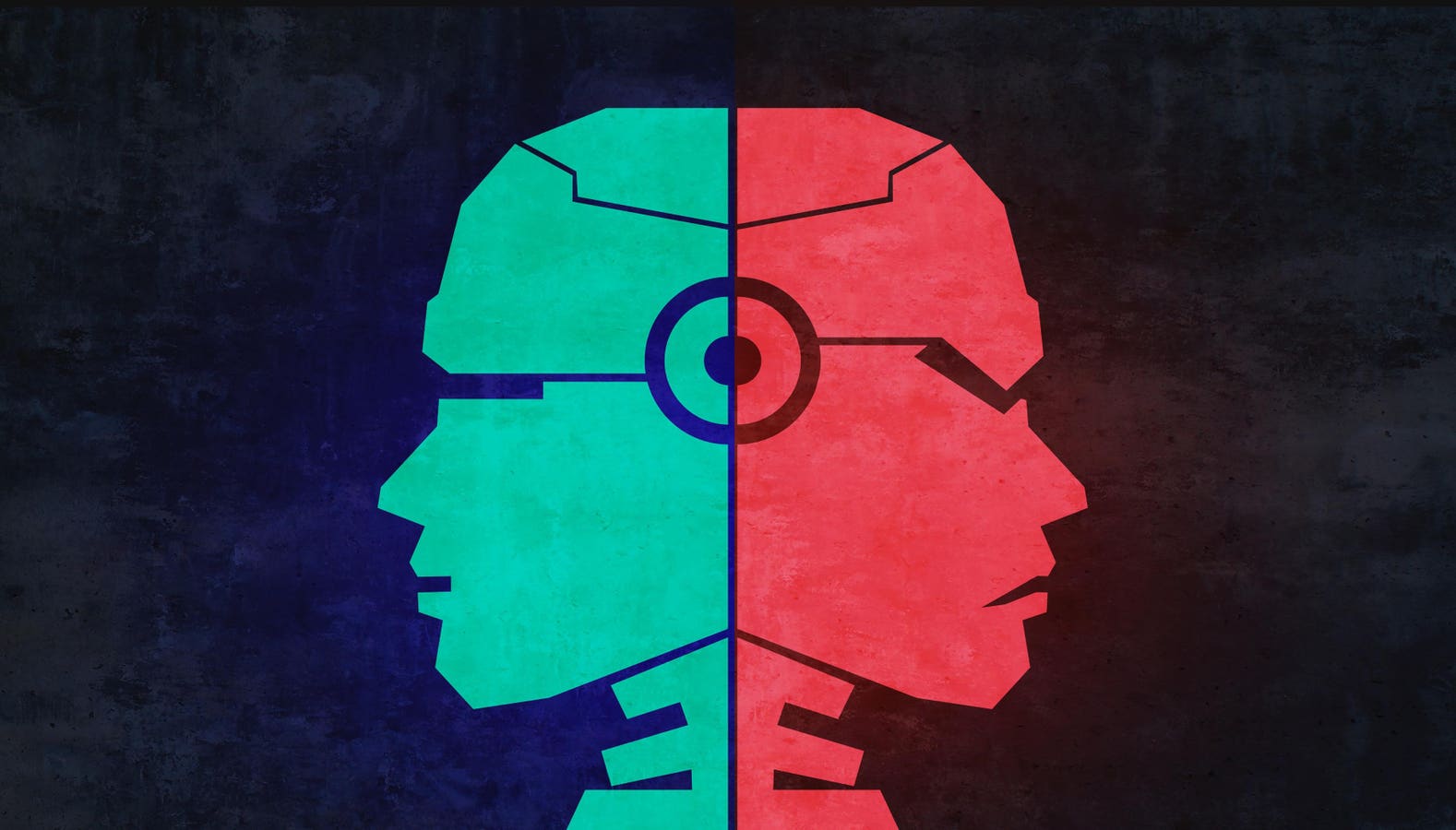TOPSHOT – Employees work on a circuit breaker production line at a factory of an electronics company in Fuyang, in China’s eastern Anhui province on January 16, 2024. (Photo by AFP) / China OUT (Photo by STR/AFP via Getty Images)
AFP via Getty Images
The traditional boundaries between venture capital and private equity have begun to dissolve, creating a hybrid investment ecosystem that may be amplifying systemic risks in the technology sector. This convergence, combined with what economists term “circular financing” among major AI companies, has created conditions reminiscent of previous market bubbles – with potentially far-reaching consequences for the broader economy.
The Breakdown of Investment Boundaries
Historically, venture capital and private equity operated in distinct spheres. Venture capital focused on early-stage, high-risk investments with the potential for exponential returns, while private equity typically acquired mature companies with established cash flows. Today, these lines have blurred significantly, particularly in the AI sector.
Private equity, private credit, and asset management institutions such as Blackstone, Pimco, Magnetar Capital, Apollo, BlueOwl Capital, Carlyle, and Blackrock are now issuing debt to data center developers, traditionally a venture-backed space. As of early 2025, private debt funds had loaned around $450 billion to the technology sector, an increase of $100 billion from early 2024.
This shift represents a fundamental change in how capital flows through the technology ecosystem. Blue Owl Capital’s involvement in Meta’s $29 billion data center deal exemplifies this trend – a private credit firm providing infrastructure financing typically handled by traditional project finance or venture-backed development.
The Circular Financing Problem
Perhaps the most concerning development is what financial analysts call “roundabouting” or circular financing – a phenomenon where major technology companies simultaneously invest in and purchase from each other, creating an interlocking web of dependencies.
OpenAI’s deals with NVIDIA, AMD, and Oracle exceed $1 trillion in value. The complexity of these arrangements is staggering:
- Oracle is spending $40 billion purchasing NVIDIA’s GPUs to power a data center it has leased for 15 years to support OpenAI, for which OpenAI is paying Oracle $300 billion over the next five years
- NVIDIA has invested $100 billion in OpenAI, to be repaid over time through OpenAI’s lease of NVIDIA’s GPUs
- OpenAI has a $350 million equity stake in CoreWeave and is paying CoreWeave $11.9 billion over five years to rent NVIDIA GPUs
- NVIDIA has committed to buying any of CoreWeave’s unsold cloud computing capacity by 2032 in a $6.3 billion order
One analyst judged that half of NVIDIA’s revenue comes from just these companies, according to reporting by Bloomberg.
Financial Times columnist Bryce Elder captured the absurdity: “Imagine a caravan maker. It sells caravans to a caravan park that only buys one type of caravan. The caravan park leases much of its land from another caravan park. The first caravan park has two big customers. One of the big customers is the caravan maker. The other big customer is the caravan maker’s biggest customer”.
The circular financing problem, also called “roundabouting”: a phenomenon where major technology companies simultaneously invest in and purchase from each other, creating an interlocking web of dependencies.
Josipa Majic Predin
The Mob Mentality: Herd Behavior in AI Valuations
The venture capital industry’s traditional “spray and pray” investment strategy has evolved into something more concerning: synchronized, momentum-driven capital deployment that resembles herd behavior more than independent risk assessment.
In the beginning, venture was small, scrappy, and genuinely uncertain. Early venture partnerships were structured for asymmetric outcomes: small checks into unproven markets where variance was the point. A $100 million fund could write a dozen $5–10 million checks, lose out on nine, and still be legendary if only one returned $3 billion.
That model has fundamentally changed. When someone tells venture capitalists “They raised a $150m fund to invest into Irish space startups,” faces drop: because there are not enough Irish space startups to absorb this investment. The bigger the growth of a fund, the more the distribution curve flattens. Returns concentrate. And the entire model shifts from optionality to obligation.
The Magnificent Seven Concentration
The market concentration around AI-related stocks has reached unprecedented levels. The “Magnificent Seven” tech stocks now make up over 50 percent of the market-cap weight of the S&P 500 index, according to analysis from Employ America.
The Mag7’s second-quarter earnings this year rose 26 percent while the rest of the S&P 500 rose just 1 percent. This concentration creates a dangerous feedback loop: as these stocks rise, index funds must buy more, which drives prices higher, attracting more capital in a self-reinforcing cycle.
The Cash Flow Problem
Beneath the soaring valuations lies a fundamental problem: AI companies are hemorrhaging cash with no clear path to profitability.
Back-of-the-envelope math using hyperscalers’ public statements and publicly available news sources suggests that hyperscalers have invested over $560 billion into AI technology and data centers between 2024 and 2025 and have reported revenues of just $35 billion – in other words, they have made no profit.
Individual examples are even more stark:
- xAI is reportedly spending $1 billion per month and is only expected to earn $500 million this year
- Recent forensic accounting suggests that OpenAI lost $11.5 billion between July and September 2025, or $3.8 billion per month
A Sequoia Capital analysis found a $500 billion gap between the revenue expectations implied by technology companies’ AI infrastructure buildout and actual revenue growth in the AI ecosystem. A Bain report stated that the scaling trend of the AI sector required $2 trillion in new revenue – more than five times the size of the existing software subscription market.
The Venture-Private Equity Hybrid Model
The convergence of VC and PE approaches has created new financial structures that distribute risk in opaque ways. Hyperscalers can use sale-leaseback transactions to commission and build single-tenant data centers off their balance sheets.
In Meta’s $29 billion deal with Blue Owl Capital and PIMCO, Meta will spend on preparing a site for its data center through an SPV it co-owns with Blue Owl Capital (Meta owns 20 percent, Blue Owl 80 percent) and the SPV will secure debt from PIMCO. When the data center is complete, Meta will lease the data center back from the SPV as its sole tenant for 15 to 20 years.
This structure, reported by Bloomberg, allows companies to raise billions in debt without posting it on their balance sheets – making leverage levels appear lower than they actually are.
The Collateral Problem: GPU Depreciation
Adding to these concerns is the rapid depreciation of the sector’s key assets: graphics processing units (GPUs). An H100 GPU which used to cost $30,000 and commanded a rental price as high as $8 per hour now costs as little as $1 per hour to rent.
GPU market-leader NVIDIA has historically released new GPU models every two years – but now plans to release new GPUs on a one-year cycle. This accelerated obsolescence creates a dangerous dynamic for companies using GPUs as collateral for loans.
Barclays analysts saw GPU depreciation as risky enough to merit marking down the earnings estimates of Google (Alphabet), Microsoft, and Meta as much as 10 percent, arguing that consensus modeling was severely underestimating the earnings write-offs required.
The Minsky Framework: Understanding Bubble Dynamics
Financial economist Hyman Minsky’s work on financial instability provides a useful framework for understanding current dynamics. Minsky identified “Ponzi finance” units as those where “the cash flows from operations are not sufficient to fulfill either the repayment of principal or the interest due on outstanding debts by their cash flows from operations”.
In the short-term, cash flows in the AI sector are wholly insufficient to service liabilities, and, as the AI sector grows, it does not look like this condition will change in the near-term.
The sector exhibits classic bubble characteristics identified by State Street Associates researchers: asset centrality (where one sector drives returns across the broader market) combined with inflated relative valuations.
Policy Implications and Systemic Risk
The systemic risks extend beyond Wall Street. Data center capital expenditure is currently the chief motor of growth in the U.S. economy: AI investment accounts for more than 40 percent of U.S. GDP growth this year, according to analysis by economist Ruchir Sharma.
Stock ownership represents around 30 percent of the net worth of American households – we are all incredibly exposed to the data center boom. The concentration of market gains in AI-related stocks means that pension funds, 401(k)s, and index funds are heavily weighted toward these companies.
JPMorgan notes that AI-related debt is now the largest segment of the market for investment-grade debt – at $1.2 trillion – and AI-focused companies comprise a higher share of the investment-grade issuance market than U.S. banks, as reported by Bloomberg.
The Government Backstop Question
The intertwining of the AI sector with national industrial policy creates additional complications. In early November, the CFO of OpenAI suggested that the company would be open to a federal “guarantee” for GPU purchases. Although both the federal government and OpenAI CEO Sam Altman stressed that there are no plans for federal financial backstops, OpenAI has previously petitioned the federal government for loan guarantees.
The AI Action Plan published by the White House directs federal agencies to support AI innovation, rapid energy access for data centers, and streamlined construction – creating what some economists call a “venture-state symbiosis.”
Historical Parallels and Warning Signs
The current situation bears uncomfortable similarities to previous bubbles. The data center boom is now larger than previous technology booms – the railroad and dotcom bubbles are most frequently referenced – and, as a share of GDP, it is comparable to the housing bubble.
Unlike previous tech bubbles, however, this one has immediate implications for the broader economy. Analysis from Employ America stressed that there is no countervailing economic dynamism to cushion the impact of a potential market correction in the near-term aftermath: “The losses in a tech sector bust will simply be too large and swift to be neatly offset by an imminent and symmetric boom elsewhere”.
Conclusion: Systemic Vulnerability
The convergence of venture capital and private equity in the AI sector, combined with circular financing arrangements and unprecedented market concentration, has created a financial structure that amplifies risk rather than distributing it. The mob-like momentum driving AI valuations shows little regard for traditional metrics like cash flow, profitability, or sustainable business models.
These companies’ equity valuations are their ticket to financing their capital expenditures. Without a booming equity market, their short-term corporate bond spreads will rise – and the spreads on debt for their long-term investments as well as their SPVs will certainly start climbing.
The question is not whether these financial arrangements are sustainable – the cash flow data suggests they are not. The question is what happens when the music stops, and whether the public sector will be called upon to backstop what has become the primary engine of U.S. economic growth.As economist John Maynard Keynes warned: “When the capital development of a country becomes a by-product of the activities of a casino, the job is likely to be ill-done.”









